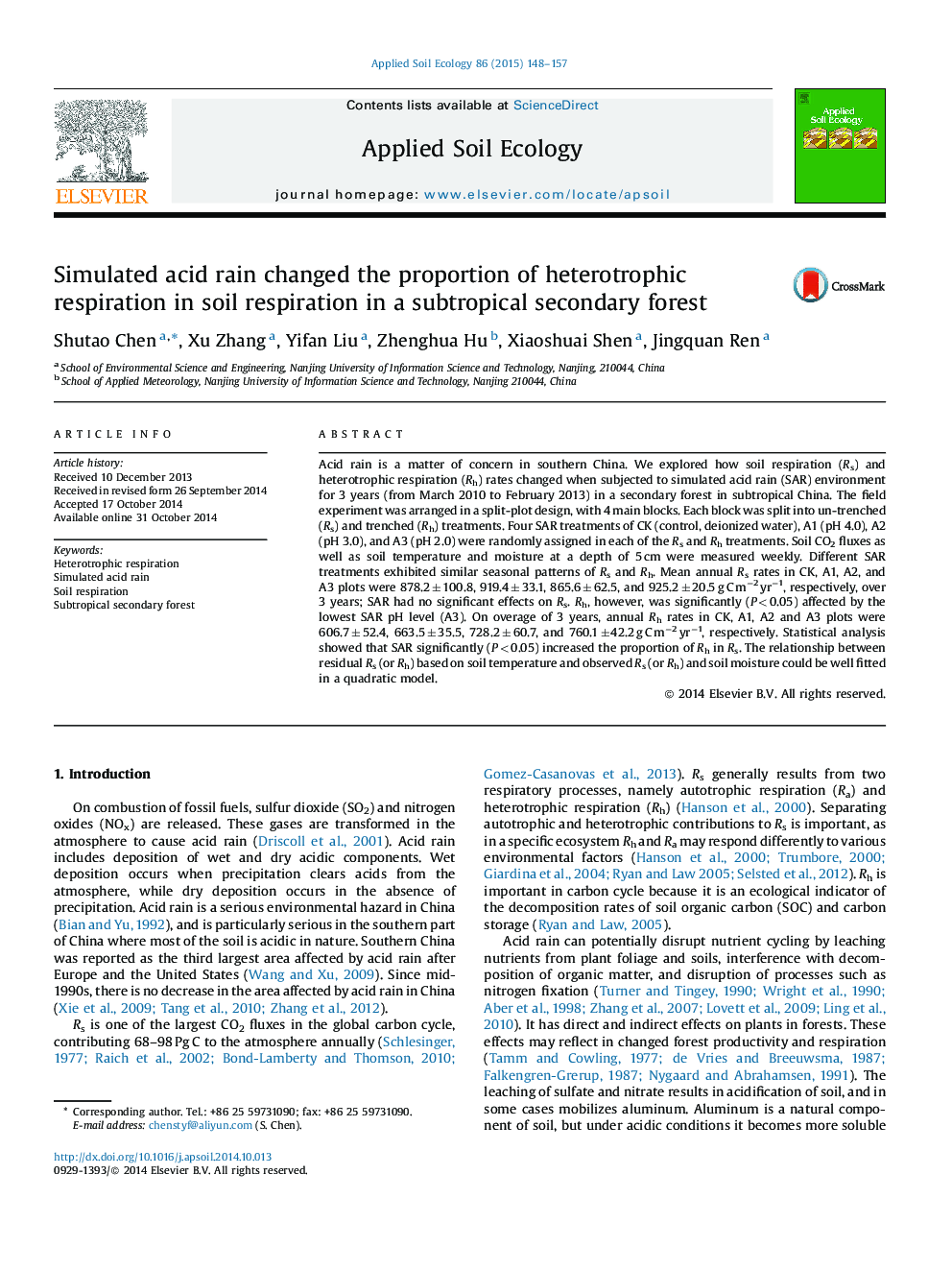| Article ID | Journal | Published Year | Pages | File Type |
|---|---|---|---|---|
| 4382102 | Applied Soil Ecology | 2015 | 10 Pages |
•Simulated acid rain (SAR) had no significant effects on soil respiration (Rs).•Strong SAR with pH 2.0 significantly increased heterotrophic respiration (Rh).•Strong SAR with pH 2.0 and 3.0 significantly increased the proportion of Rh in Rs.
Acid rain is a matter of concern in southern China. We explored how soil respiration (Rs) and heterotrophic respiration (Rh) rates changed when subjected to simulated acid rain (SAR) environment for 3 years (from March 2010 to February 2013) in a secondary forest in subtropical China. The field experiment was arranged in a split-plot design, with 4 main blocks. Each block was split into un-trenched (Rs) and trenched (Rh) treatments. Four SAR treatments of CK (control, deionized water), A1 (pH 4.0), A2 (pH 3.0), and A3 (pH 2.0) were randomly assigned in each of the Rs and Rh treatments. Soil CO2 fluxes as well as soil temperature and moisture at a depth of 5 cm were measured weekly. Different SAR treatments exhibited similar seasonal patterns of Rs and Rh. Mean annual Rs rates in CK, A1, A2, and A3 plots were 878.2 ± 100.8, 919.4 ± 33.1, 865.6 ± 62.5, and 925.2 ± 20.5 g C m−2 yr−1, respectively, over 3 years; SAR had no significant effects on Rs. Rh, however, was significantly (P < 0.05) affected by the lowest SAR pH level (A3). On overage of 3 years, annual Rh rates in CK, A1, A2 and A3 plots were 606.7 ± 52.4, 663.5 ± 35.5, 728.2 ± 60.7, and 760.1 ± 42.2 g C m−2 yr−1, respectively. Statistical analysis showed that SAR significantly (P < 0.05) increased the proportion of Rh in Rs. The relationship between residual Rs (or Rh) based on soil temperature and observed Rs (or Rh) and soil moisture could be well fitted in a quadratic model.
